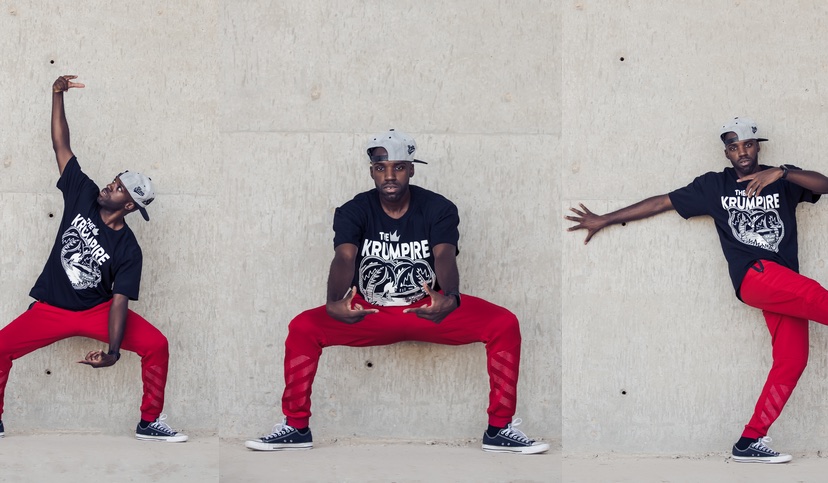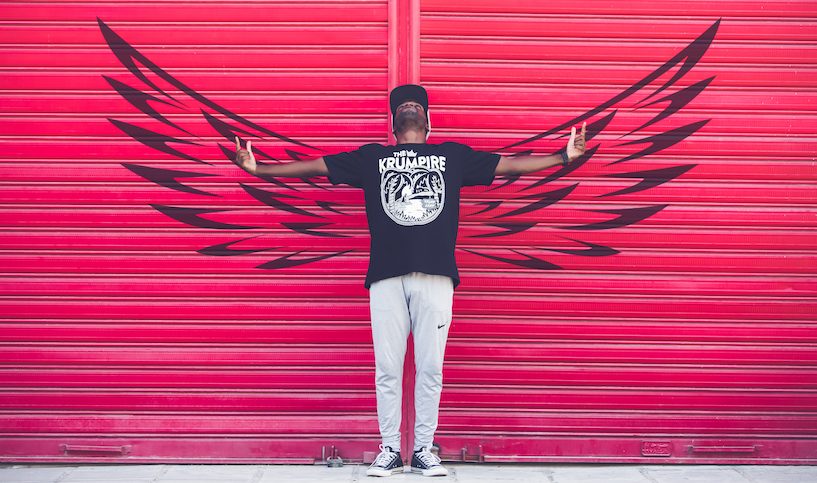No, you didn’t misread this article’s title. And no, Kuwait is not creating its own version of Trump referred to as KRUMP. Krumping is an expressive form of dance from the early 2000s, and is characterized by “free, expressive, exaggerated, and highly energetic movement to release anger, aggression and frustration positively, in a non-violent way.”
So, not only did you not know what Krumping is (shame on you), but you also did not know that Kuwait is home to its very own Krump Master Flash, Mishal Al Roomi. Mishal is no stranger to expressive entertainment, coming from a family of entertainers ranging from dancers, to musicians, and everything in between. We sat down with Mishal to get a better understanding of the art of Krump in Kuwait.
How long have you been Krumping?
I started Krump when I was 14-years-old. I’ve been Krumping for almost 12 years now.
Is this the first form of dance you studied or do you have more in your arsenal?
Actually it was the third. I started off with break dancing then hip-hop, and I’m self-taught in both dance disciplines. Back in the day, my older brother was also the only Krumper in his crew and it was he who introduced me to Krump. I got into other styles [of dance] over the years, such as African Dance, House, Popping, Contemporary and Locking, but Krump always held a special spot in my heart.
How is the Krump scene in Kuwait, and do you perform at regular shows?
I’ve participated in a few events and collaborated with a few local and international artists but there has been no official Krump event in Kuwait yet. This is because people still don’t understand what Krump really is or where it came from. No one has ever gone on stage to explain its rich history. This is also the main reason for the declining number of Krumpers in Kuwait. Some simply decided to leave and try other disciplines.
Are there classes available in Kuwait for those who wish to learn?
Like I mentioned before, I happen to be the only Krumper in Kuwait, making me the unofficial leader of Kuwait’s Krump movement. So you will have to follow me for Krump classes. But basically, the answer to that question is yes.
Did you experience any difficulties or injuries with Krumping?
The first thing people usually exclaim after trying out my class is, “Man that was one tough workout!” and yes Krump has that much power and that is why we mainly teach Krumpers how to control that power otherwise they could hurt themselves. In my first two years I got injured quite a lot which pushed me to learn more about the human body, breathing techniques, just to learn how to turn all that energy into a powerful, amazing dance performance.
Do you take part in competitions?
I’ve participated in a few competitions, and won first place in most of them but the biggest Krump event which was a life changer for me was Krumpire 2018 in Russia—It was 10 days of Krump Camp workshops, battles and sessions. In 2015, I was one of the leading dancers at the LOYAC Academy for Performing Arts. We worked with a French company called Attcafa and together we created a series of shows called Aswat. Some shows were performed in Kuwait, and one was taken to France. The show basically explained the history of Kuwait starting from the pearl diving days up until the discovery of oil. During our trip [to France] my dance partners Bboy, Seasick and Melony and I gave a few workshops in Lille and in Belgium.
In 2016, we visited France again and my sister Awash, Melony and I performed a show called Kalam Ams w Elyoom, a show which discussed the history of the Arabic language. We performed in Paris on the National Day of the Arabic language. We also performed in the Theater Manège Maubeuge and also in Lille. We gave workshops in Krump, Bollywood Hip-Hop and Afro Dance styles.
How would you describe Krumping to a beginner?
Krump is just like any dance style, as it is a form of expression through sharp and fast movements. It looks aggressive, only because the creator formed this style during a painful time of his life, so that’s basically the feeling that brought this style to existence. But just like any other [dance] style, you can learn the movement, then express the way that you feel. For example, for me [I’m expressing] the feeling of loneliness.

We hear that Krumping is the reason behind a magical occurrence in your life, can you tell us more about that?
It’s a funny story actually. I met my wife Shujoon in one of my classes!
What is it like to be married to a dancer?
Mishal: She’s one of my biggest supporters.
Shujoon: It was never a big issue to be honest, as we already know our society’s mentality so we knew we’d face comments here and there. Surprisingly, we actually inspired other couples to practice together, and we had a lot of people admiring what Mishal and I do together. We didn’t face much issues and thankfully, people were always supportive of us.
Do you try to outperform one another?
It’s never a competition for us, as we’re always trying to push each other together.
How do you see the future of Krump in Kuwait?
Just like any other movement, it requires educated people to put their hands together and work as a team, which is a mentality lost by a lot of dancers here in Kuwait. We should learn to share more, rather than to just compete. More group sessions and jams should be held to bring together all styles of dancers. The main thing we should focus on is to teach our dancers how to share and collaborate. In Krump, we share so much to the point that the Krumper in the middle could literally lose their mind. That’s what Krump is about…sharing.
It pains me that no one gets that, including the dancers here in Kuwait, which, in some cases, means that the person you’re trying to share with doesn’t have the sharing mentality so they won’t see it nor feel it well. The answer to that question is Krump will grow once we learn how to share!
For more on Mishal Al Roomi’s work with Krump, check out @mishal_alroomi21 on Instagram. Photography by Rashid, @Rashidpvg on Instagram.


 New video on YouTube
New video on YouTube 






